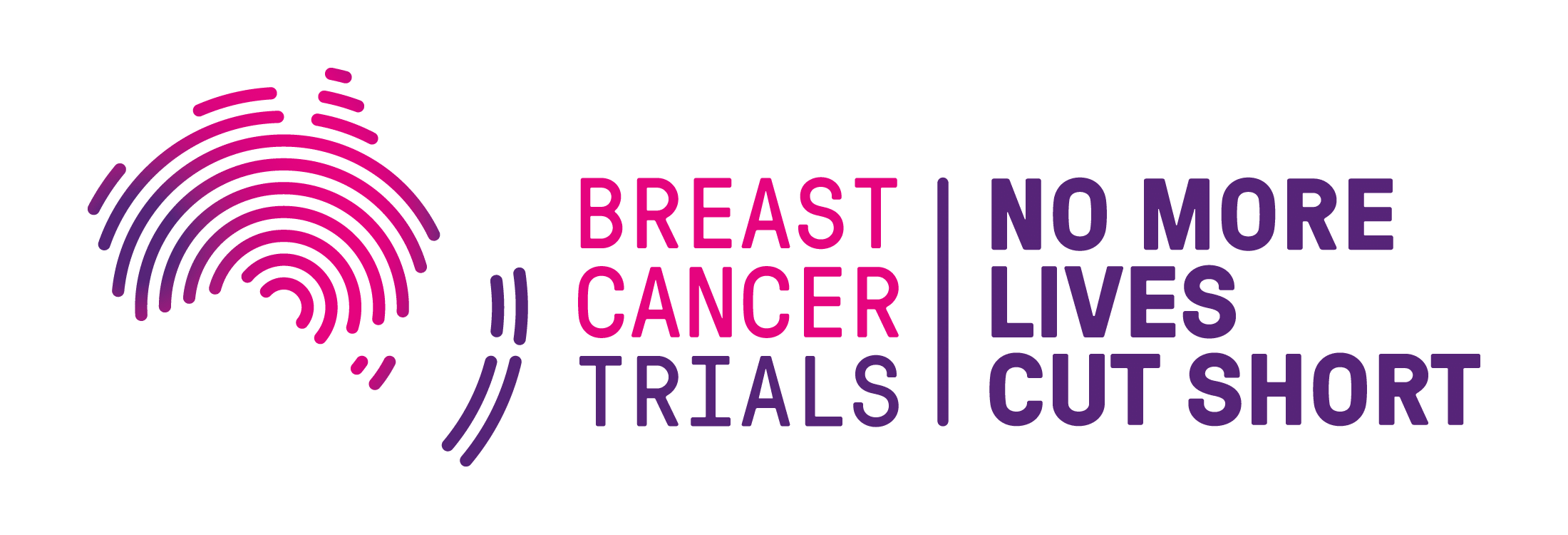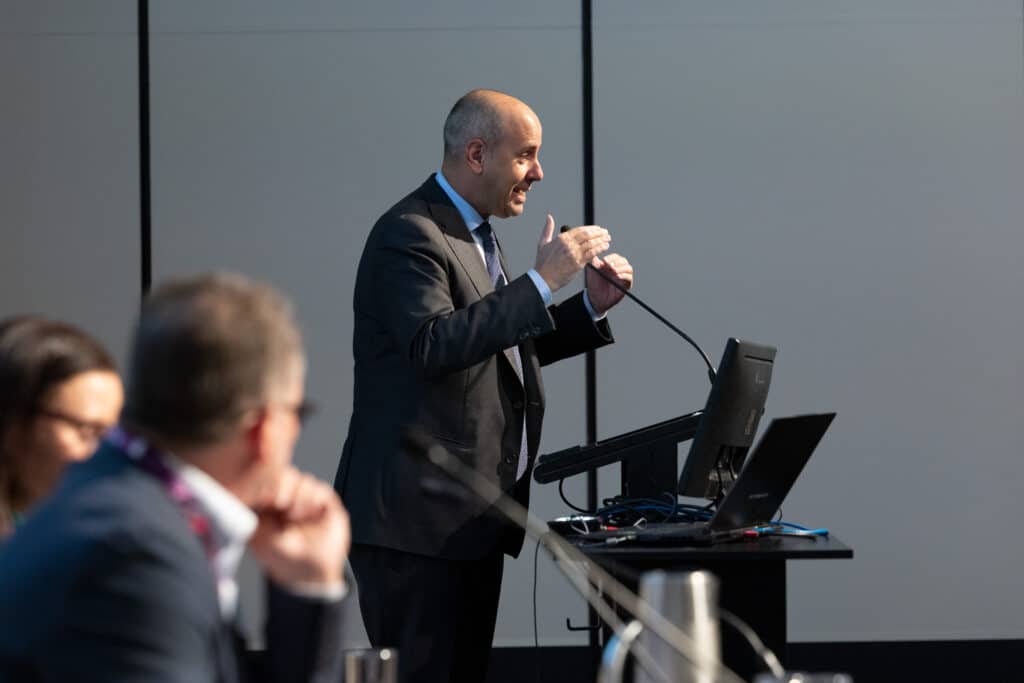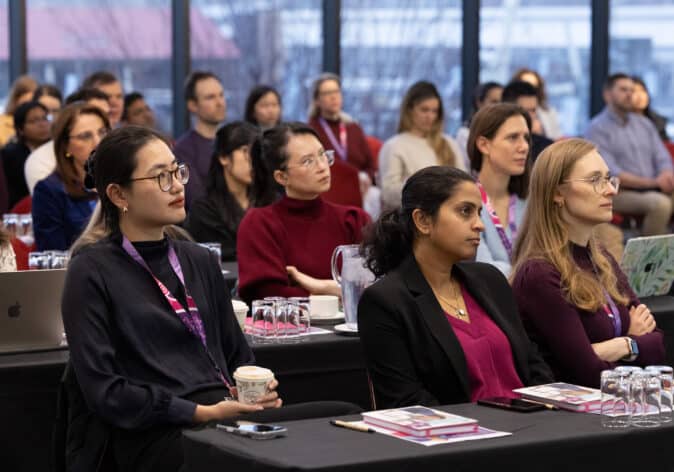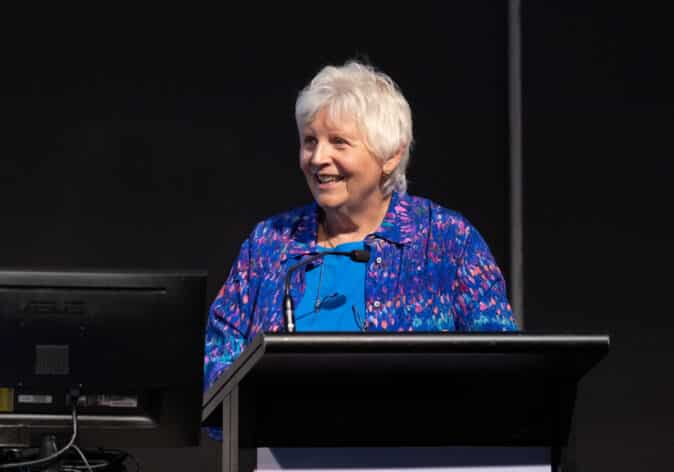Neoadjuvant Now: What’s Next in Pre-Surgical Breast Cancer Treatment?
More breast cancer patients are now receiving treatment before surgery, also known as neoadjuvant therapy. But what’s next for this approach?
In this episode, our guest Dr Javier Cortes, Head of the International Breast Cancer Centre (IBCC) in Barcelona, shares insights into the latest neoadjuvant treatments being tested and how they could shape the future of breast cancer care.
“Neoadjuvant therapy is giving usual systemic treatments before the final surgery to optimise long-term outcomes and also to optimise surgery. It has shown that we have a second option to treat our patients for those ones who do not achieve pathological complete remission.”
“This is one of the most important reasons to go from the adjuvant therapy in the HER2-positive setting and to relate that to other breast cancer subtypes. The adjuvant therapy has had a lot of advantages, one of them being that we cand decrease the tumour size.”
“So basically, the surgery will be much better, and I think that one of the most important aspects is to look at the pathological complete or not pathological complete information of the tumour and this will tell us the possibility to have different options after surgery.”
“Pathological complete response is a very important endpoint for patients. We know that those patients who achieve pathological complete remission will have much better outcomes. And this is a second important aspect of PCR, is that we know that for those patients who need not achieve pathological complete remission, if we go for further treatment after surgery, we will improve outcomes.”
What new drugs or treatment combinations are currently being explored in the neoadjuvant setting?
“We have more and better agents in both in the anti HER2-setting but also in the triple-negative breast cancer setting, that we have included that will locate against HER2 or HER2+ breast cancer, and we have started to use both carboplatin and immunotherapy in the triple-negative breast cancer situation.”
“More and more we have learned how to de-escalate treatment basically in HER2+ disease, which means that we can cure the same number of patients without giving so much therapy. We have seen that many patients could be cured even without the need of chemotherapy or just decreasing the amount of chemotherapy and that’s one of the most beautiful aspects.”
“There are many strategies which have been explored in the new urban setting. We are exploring different immunotherapy combinations in the triple-negative breast cancer setting. We’re exploring many anterior conjugate-based therapies in the HER2+ positive and also triple-negative breast cancer settings. So many new strategies are being explored there.”
Listen to the podcast
In this episode, our guest Dr Javier Cortes, Head of the International Breast Cancer Centre (IBCC) in Barcelona, shares insights into the latest neoadjuvant treatments being tested and how they could shape the future of breast cancer care.

Key takeaways
1. Neoadjuvant therapy improves outcomes and guides personalised care
Giving systemic treatment before surgery helps shrink tumours, improves surgical outcomes, and—crucially—provides information about pathological complete response (PCR). PCR is a strong predictor of long-term survival and helps clinicians tailor post-surgery treatments for those who don’t achieve a full response.
2. Treatment is shifting toward precision and de-escalation
Advances in the HER2-positive and triple-negative breast cancer settings now allow many patients to be cured with less chemotherapy, or even without it. Trials like PHERGain 2 are testing chemotherapy-free regimens, while others are exploring antibody–drug conjugates and immunotherapy combinations to further individualise care.
3. Quality of life and patient choice are central
By reducing drug intensity and side effects through de-escalation, clinicians can maintain or improve quality of life without compromising cure rates. Communication with patients—especially about timing of surgery and treatment expectations—is key to managing anxiety and supporting shared decision-making.
4. The future lies in biological and genomic integration
In the next 5–10 years, genomic testing and biological profiling will play a greater role in selecting neoadjuvant therapies. This integration will help optimise treatment sequencing, avoid overtreatment, and extend neoadjuvant approaches even to earlier-stage and lower-risk breast cancers.
How has neoadjuvant therapy evolved over the past decade, and what key advances have shaped its current use?
“In the HER2+ field we are looking at new anti-viral conduits which might show improvements to pathological complete remission, but also we have many clinical trials to de-escalate treatments.”
“For example, PHERGain 2 is exploring a chemotherapy-free treatment for HER2-positive early breast cancer, using a combination of trastuzumab and pertuzumab, and we expect to have their results on this trial very soon.”
“In the triple-negative breast cancer setting we are also exploring different anti-viral conjugates in combination with immunotherapy, and we might remove the use of chemotherapy. So amazing times ahead.”
“Everything has pros and cons. Sometimes the patients know that they have a tumour. So, there is anxiety for the patients, who want to remove the tumour as soon as possible. We have to talk to them to say sometimes it’s much more important to wait and go for surgery afterwards.”
What are some of the biggest benefits of giving therapy before surgery rather than after?
“The certain aspect is that sometimes toxicity might appear and if it’s not frequent, you might delay surgery a little bit depending on those aspects. And last but not least, I think it is very unlikely to happen, but of course, maybe a minor number of patients could experience progressing disease during neoadjuvant treatment, and they should go for surgery as soon as possible.”
“These are challenges, but in my opinion, these aspects should not tell us that we do not have to use neoadjuvant therapy. I think that that’s something that we can control, something that we can manage, and something that we can avoid if needed.”
“But please think about neoadjuvant therapy in a very positive way, because this is the best way to treat our patients.”
How do patient preferences and quality of life factor into decisions about neoadjuvant treatment?
“The possibility for patients to be free of disease after surgery is much higher. Usually, we’ll not have a decrease in the quality of life because usually when we are going to treat our patients, we’ll give similar drugs in the neoadjuvant versus in the adjuvant setting.”
“One more important aspect is that we’ll be able to de-escalate treatment many times if we give less drugs, that will improve the quality of life.
“When we are going to say to the patient that we are going to cure, sometimes using de-escalated treatment, sometimes even without the need of surgery in the very near future. So, curing the same or more with less treatment, I think this is challenging and I think it’s great to talk to the patient and say, listen, sometimes you will not need chemotherapy. We’re explaining the de-escalating strategies.”
“In general, we have some important benefits from stage 2 and stage 3, HER2+ and triple-negative breast cancer patients. But it’s true that the treatment options after surgery gave us a higher possibility to have pathological remission and even tailored, I think that the agreement for our patient will be to be treated with a newer strategy.”
“We are facing some of the stage 1 breast cancers with neoadjuvant therapy. I think that more and more we implement different strategies with neoadjuvant treatments in patients not only with stage 2, and stage 3 cancers, but only also with stage 1 and as I said before, in patients with low-risk tumours as well.”
What are some of the ongoing challenges with neoadjuvant therapy, such as side effects, resistance or overtreatment?
“Toxicity is something to be considered, of course, and also the possibility to look at resistances in the tumours. But I think that this is something that we can observe that is so unlikely to happen and we can always go to surgery if needed.”
“And for both early breast cancer and metastatic breast cancer, in my opinion it’s even more important because at the end of the day we have to increase the quality of life. And maintaining quality of life in the early breast cancer society is of course also very important. But we should not forget that the primary objective is to cure our patients.”
“Quality of life is key, and is very important, but curing the patients is the most important endpoint when we are facing these patients. And I think that we have plenty of clinical trials which are approaching this method. So, I think that these two aspects are very important, but optimising therapy if no PCR has been achieved after surgery, it’s a very important surrogate endpoint for clinical trials.”
“I think that the new advanced setting has been clearly improved. I think all research is exciting. You know, trying to improve something, whatever it is, is terrific and amazing.”
“But I think that the more we know about the biology, the more we know about the new agents and the more we know about what these agents might offer, we will move from the metastatic to the adjuvant to the neoadjuvant setting.”
“For example, in the oestrogen-positive, HER2- disease, we are facing now decent strategies to de-escalate treatments using the neoadjuvant approach. So I’m sure that in the future we will also use the neoadjuvant approach with different drugs also in less risky patient population.”
Looking ahead, what do you anticipate the next 5-10 years will look like in the neoadjuvant therapy space?
“I think that currently genomic testing is widely used in the adjuvant setting, but more and more we’re implementing all these tools also into the neoadjuvant approach.”
“Unfortunately, we will not have a clear path yet and I’m sure that in the very near future we’ll implement the best treatments with the best biological tools, and biological assessments to optimise patient care and in implementing this technology, this will help us to de-escalate and to use more treatments in the neoadjuvant setting.”
QUICK ACCESS
Neoadjuvant Now: What’s Next in Pre-Surgical Breast Cancer Treatment?
What new drugs or treatment combinations are currently being explored in the neoadjuvant setting?
What are some of the biggest benefits of giving therapy before surgery rather than after?
How do patient preferences and quality of life factor into decisions about neoadjuvant treatment?

Dr Javier Cortes
Support Breast Cancer Research
Neoadjuvant Now: What’s Next in Pre-Surgical Breast Cancer Treatment?
In this episode, our guest Dr Javier Cortes, Head of the International Breast Cancer Centre (IBCC) in Barcelona, shares insights into the latest neoadjuvant treatments being tested and how they could shape the future of breast cancer care.
Podcast Transcript
-
Neoadjuvant Now: What’s Next in Pre-Surgical Breast Cancer Treatment
More breast cancer patients are now receiving treatment before surgery, also known as neoadjuvant therapy. But what’s next for this approach?
In this episode, our guest Dr Javier Cortes, Head of the International Breast Cancer Centre (IBCC) in Barcelona, shares insights into the latest neoadjuvant treatments being tested and how they could shape the future of breast cancer care.
Can you explain what neoadjuvant therapy is and why it’s used in breast cancer treatment?
“Neoadjuvant therapy is giving usual systemic treatments before the final surgery to optimise long-term outcomes and also to optimise surgery. It has shown that we have a second option to treat our patients for those ones who do not achieve pathological complete remission.”
“This is one of the most important reasons to go from the adjuvant therapy in the HER2-positive setting and to relate that to other breast cancer subtypes. The adjuvant therapy has had a lot of advantages, one of them being that we cand decrease the tumour size.”
“So basically, the surgery will be much better, and I think that one of the most important aspects is to look at the pathological complete or not pathological complete information of the tumour and this will tell us the possibility to have different options after surgery.”
“Pathological complete response is a very important endpoint for patients. We know that those patients who achieve pathological complete remission will have much better outcomes. And this is a second important aspect of PCR, is that we know that for those patients who need not achieve pathological complete remission, if we go for further treatment after surgery, we will improve outcomes.”
And what new drugs or treatment combinations are currently being explored in the neoadjuvant setting?
“We have more and better agents in both in the anti HER2-setting but also in the triple-negative breast cancer setting, that we have included that will locate against HER2 or HER2+ breast cancer, and we have started to use both carboplatin and immunotherapy in the triple-negative breast cancer situation.”
“More and more we have learned how to de-escalate treatment basically in HER2+ disease, which means that we can cure the same number of patients without giving so much therapy. We have seen that many patients could be cured even without the need of chemotherapy or just decreasing the amount of chemotherapy and that’s one of the most beautiful aspects.”
“There are many strategies which have been explored in the new urban setting. We are exploring different immunotherapy combinations in the triple-negative breast cancer setting. We’re exploring many anterior conjugate-based therapies in the HER2+ positive and also triple-negative breast cancer settings. So many new strategies are being explored there.”
So how has neoadjuvant therapy evolved over the past decade, and what key advances have shaped its current use?
“In the HER2+ field we are looking at new anti-viral conduits which might show improvements to pathological complete remission, but also we have many clinical trials to de-escalate treatments.”
“For example, PHERGain 2 is exploring a chemotherapy-free treatment for HER2-positive early breast cancer, using a combination of trastuzumab and pertuzumab, and we expect to have their results on this trial very soon.”
“In the triple-negative breast cancer setting we are also exploring different anti-viral conjugates in combination with immunotherapy, and we might remove the use of chemotherapy. So amazing times ahead.”
What are some of the biggest benefits of giving therapy before surgery rather than after?
“Everything has pros and cons. Sometimes the patients know that they have a tumour. So, there is anxiety for the patients, who want to remove the tumour as soon as possible. We have to talk to them to say sometimes it’s much more important to wait and go for surgery afterwards.”
“The certain aspect is that sometimes toxicity might appear and if it’s not frequent, you might delay surgery a little bit depending on those aspects. And last but not least, I think it is very unlikely to happen, but of course, maybe a minor number of patients could experience progressing disease during neoadjuvant treatment, and they should go for surgery as soon as possible.”
“These are challenges, but in my opinion, these aspects should not tell us that we do not have to use neoadjuvant therapy. I think that that’s something that we can control, something that we can manage, and something that we can avoid if needed.”
“But please think about neoadjuvant therapy in a very positive way, because this is the best way to treat our patients.”
How do patient preferences and quality of life factor into decisions about neoadjuvant treatment?
“The possibility for patients to be free of disease after surgery is much higher. Usually, we’ll not have a decrease in the quality of life because usually when we are going to treat our patients, we’ll give similar drugs in the neoadjuvant versus in the adjuvant setting.”
“One more important aspect is that we’ll be able to de-escalate treatment many times if we give less drugs, that will improve the quality of life.
“When we are going to say to the patient that we are going to cure, sometimes using de-escalated treatment, sometimes even without the need of surgery in the very near future. So, curing the same or more with less treatment, I think this is challenging and I think it’s great to talk to the patient and say, listen, sometimes you will not need chemotherapy. We’re explaining the de-escalating strategies.”
“In general, we have some important benefits from stage 2 and stage 3, HER2+ and triple-negative breast cancer patients. But it’s true that the treatment options after surgery gave us a higher possibility to have pathological remission and even tailored, I think that the agreement for our patient will be to be treated with a newer strategy.”
“We are facing some of the stage 1 breast cancers with neoadjuvant therapy. I think that more and more we implement different strategies with neoadjuvant treatments in patients not only with stage 2, and stage 3 cancers, but only also with stage 1 and as I said before, in patients with low-risk tumours as well.”
What are some of the ongoing challenges with neoadjuvant therapy, such as side effects, resistance or overtreatment?
“Toxicity is something to be considered, of course, and also the possibility to look at resistances in the tumours. But I think that this is something that we can observe that is so unlikely to happen and we can always go to surgery if needed.”
“And for both early breast cancer and metastatic breast cancer, in my opinion it’s even more important because at the end of the day we have to increase the quality of life. And maintaining quality of life in the early breast cancer society is of course also very important. But we should not forget that the primary objective is to cure our patients.”
“Quality of life is key, and is very important, but curing the patients is the most important endpoint when we are facing these patients. And I think that we have plenty of clinical trials which are approaching this method. So, I think that these two aspects are very important, but optimising therapy if no PCR has been achieved after surgery, it’s a very important surrogate endpoint for clinical trials.”
“I think that the new advanced setting has been clearly improved. I think all research is exciting. You know, trying to improve something, whatever it is, is terrific and amazing.”
“But I think that the more we know about the biology, the more we know about the new agents and the more we know about what these agents might offer, we will move from the metastatic to the adjuvant to the neoadjuvant setting.”
“For example, in the oestrogen-positive, HER2- disease, we are facing now decent strategies to de-escalate treatments using the neoadjuvant approach. So I’m sure that in the future we will also use the neoadjuvant approach with different drugs also in less risky patient population.”
Looking ahead, what do you think that the next 5 to 10 years will look like for neoadjuvant therapy and breast cancer?
“I think that currently genomic testing is widely used in the adjuvant setting, but more and more we’re implementing all these tools also into the neoadjuvant approach.”
“Unfortunately, we will not have a clear path yet and I’m sure that in the very near future we’ll implement the best treatments with the best biological tools, and biological assessments to optimise patient care and in implementing this technology, this will help us to de-escalate and to use more treatments in the neoadjuvant setting.”



